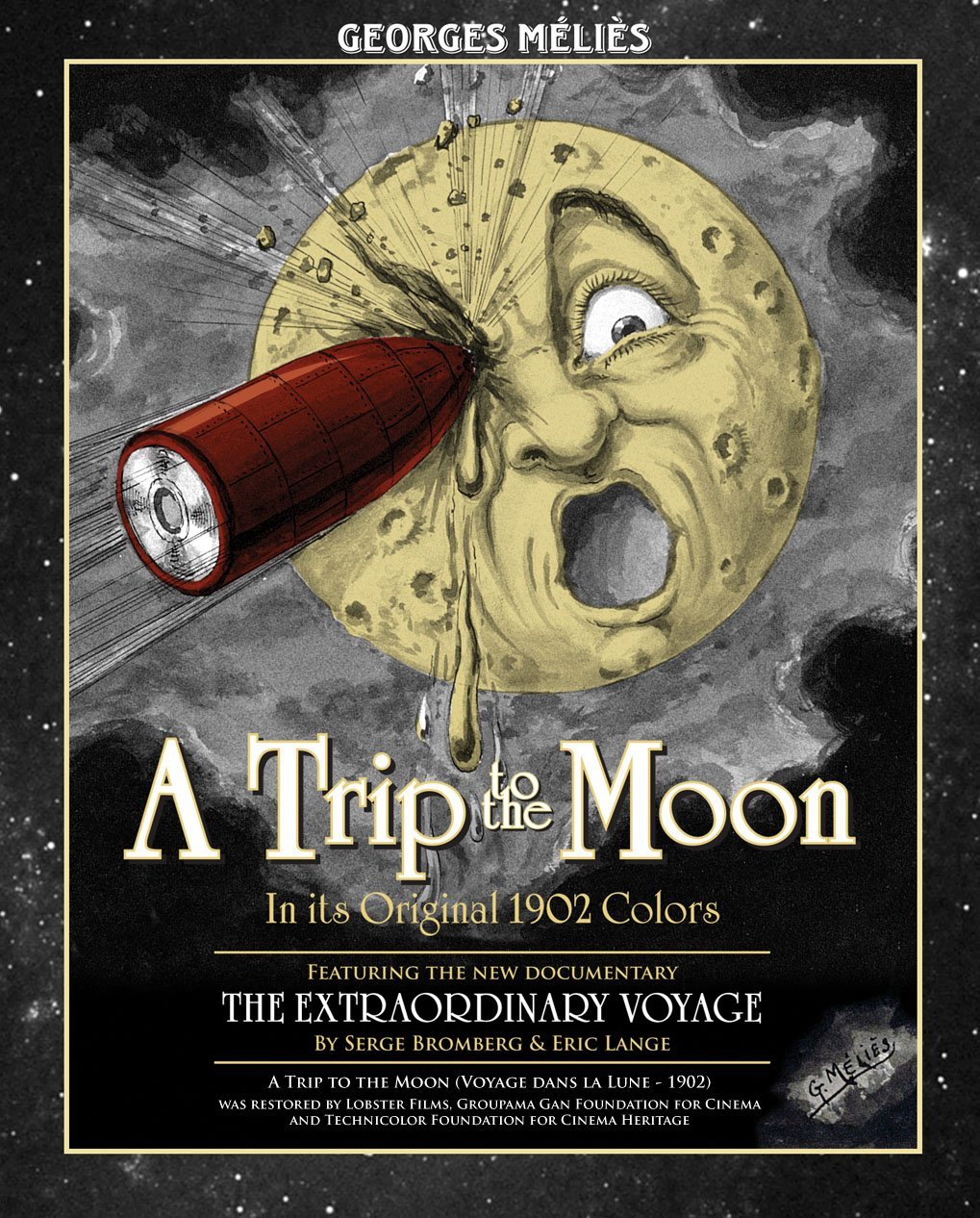A Trip to the Moon (1902)

A group of astronomers go on an expedition to the Moon.
Director: Georges Méliès
Writer: Jules Verne, H.G. Wells, Georges Méliès
Stars: Georges Méliès, Victor André, Bleuette Bernon
Country: France
Genre: Sci-Fi
The year is 1902 and audiences have grown from the "shock and awe" of seeing moving pictures of every-day life events, such as a train moving or a horse galloping. People wanted more. They wanted to be engaged by pictures now that their shock value had begun to wear off. Enter Georges Méliès, magician turned filmmaker who brought a narrative flair to films that transformed people from their regular lives and took them on a trip to the moon.
With film, "Méliès had found a way to perform actual magic with editing, to fool an audience and pull off illusions he'd never been able to do on stage."
Méliès pioneered several in-camera tricks, such as Double Exposure1, to trick audiences into believing the impossible, and once again shocking them. But he didn't stop there as, unlike other films of the time, Méliès brought in his extensive sets and props from his time as a stage magician to build upon his narratives until they gripped audiences and made them believe the story they were watching.
A Trip to the Moon, as the first Science Fiction film ever made. A Trip to the Moon utilizes simple in-place shots with no close ups, such as had been done in George Albert Smith's short film, Grandma's Reading Glass from 1900. Yet despite the relatively basic cinematography, Trip to the Moon was a massive international success and is considered a classic due to it being Méliès' biggest production. It was unheard of for the time for a film to be fifteen minutes long, and brought together all the special effects tricks he had learned, as well as being his most ambitious story yet with beautiful sets and costumes to match. Audiences were hooked by the exciting space adventure because they had never seen a narrative picture like it before. With this single film, Méliès' reinvented film production and narratives and inspired other filmmakers to follow in his artistic footsteps.
1: Double Exposure: A trick where you shoot footage twice over the same piece of film to make it look like two separate events are occurring at the same time.